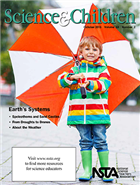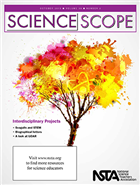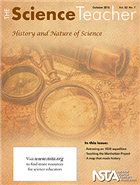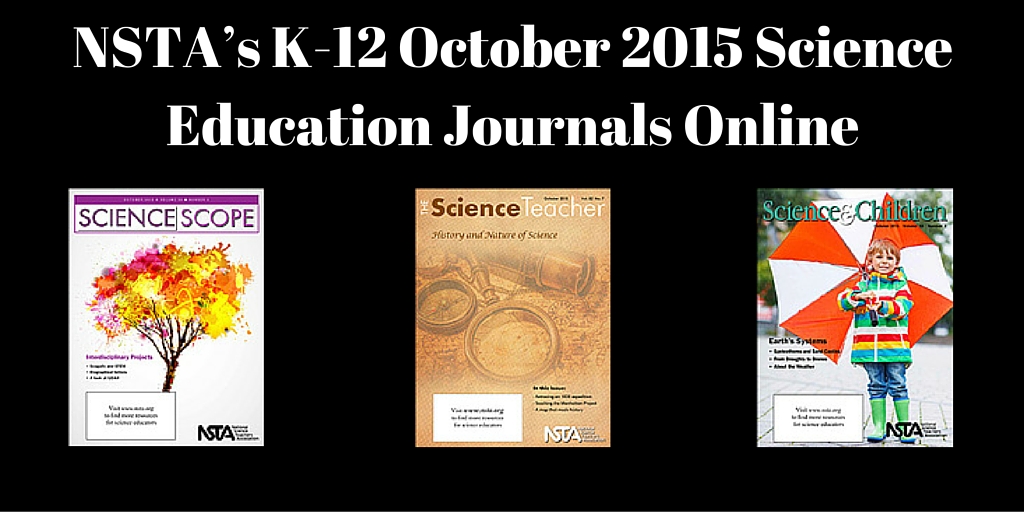NSTA’s K-12 October 2015 Science Education Journals Online
By Korei Martin
Posted on 2015-10-01
Looking for ways to talk about climate change with your students? Are your students curious about the nature of science? Want to know how to create interdisciplinary lessons connected to real-world applications? The October K–12 journals from the National Science Teachers Association (NSTA) have the answers you need. Written by science teachers for science teachers, these peer-reviewed journals are targeted to your teaching level and are packed with lesson plans, expert advice, and ideas for using whatever time/space you have available. Browse the October issues; they are online (see below), in members’ mailboxes, and ready to inspire teachers!
Science and Children
Our rapidly changing climate increases the need for even our youngest students to have a strong background in this area of science. This issue of S&C will help you teach your students about Earth’s systems, with a particular focus on climate.
Featured articles (please note, only those marked “free” are available to nonmembers without a fee):
- Free – Speleothems and Sand Castles
- From Droughts to Drones
- Animal Detectives
- NGSS in Action
- Free – Editor’s Note: Earth’s Systems: Climate
- Free – DCIs, SEPs, and CCs, Oh My!
- Teaching Through Trade Books: Wonderful Water
- Full Table Contents
Science Scope
Although middle level science classes often seem self-contained to students, scientific disciplines—and the scientific field at large—do not exist in isolation. The articles in this issue of Science Scope will show you how to collaborate with other science and content-area teachers to create interdisciplinary lessons connected to real-world applications.
- Free – See Less Sea-Less Seagulls: Planning for an Interdisciplinary STEM Unit
- Shrimp and Black Gill: Studying the Effect of Apostome Ciliates
- Free – DCIs, SEPs, and CCs, Oh My! Understanding the Three Dimensions of the NGSS
- Connecting the Dots: Lasers Link Students to Their 3-D World
- Using Biographical Letters to Draw on the Nature of Science
- Using a STEM-Based Approach to Make Recycling Metallic Elements Relevant
- Free – Editor’s Roundtable: Interdisciplinary Teaching
- Full Table of Contents
The Science Teacher
Learning about the nature of science (NOS) is certainly as important as learning about scientific laws and theories. In this increasingly scientific and technological age, personal and societal decisions require a clear understanding of scientific knowledge and how it is generated. NOS tenets need to be intentionally targeted in classroom activities and laboratory investigations and incorporated into all our science teaching. Using case studies from the history of science can help develop students’ understanding of the nature of science and the diverse individuals practicing science and engineering today, as articles featured in this issue illustrate.
Featured articles (please note, only those marked “free” are available to nonmembers without a fee):
- Free – Teaching the Manhattan Project
- William Smith’s Mapping Milestone
- Chemical Solitaire
- A Cool Controversy
- Are We Alone in the Universe?
- Free – DCIs, SEPs, and CCs, Oh My! Understanding the Three Dimensions of the NGSS
- Free – Editor’s Corner: The Nature of Science
- Full Table of Contents
Get these journals in your mailbox as well as your inbox—become an NSTA member!
The mission of NSTA is to promote excellence and innovation in science teaching and learning for all.
Follow NSTA
Disclaimer: The views expressed in this blog post are those of the author(s) and do not necessarily reflect the official position of the National Science Teaching Association (NSTA).



